The internet of things is paving the way for healthcare applications to create a connected medical environment, enable patient monitoring and improve systems
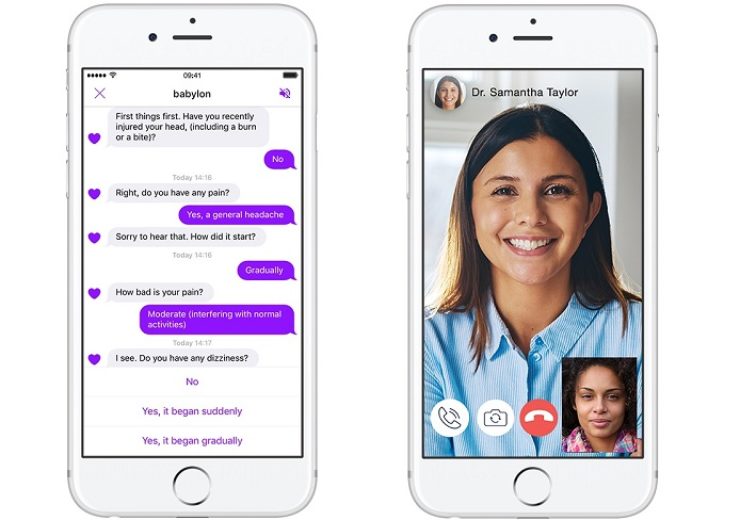
Babylon Health's app allows users to have a remote consultation with a virtual or real doctor (Credit: Babylon Health)
From virtual doctor consultations to predicting asthma attacks, the internet of things (IoT) could soon transform the landscape in delivering healthcare.
The technology buzzword is used to describe the network of smart devices that are connected with each other by the internet, and some of its most pertinent use cases is in the medical arena.
By helping people lead a healthy lifestyle through tracking their everyday eating and exercise habits to bringing clinicians and patients closer together, it could lead to an emphasis shift in treatment from reactive diagnosis to prevention that puts the focus on the patient.
Market research website Statista says there are about 26 billion IoT devices in the world today but, by 2025, this is expected to grow to 75 billion.
Within this same six-year period, the size of the global IoT healthcare market is expected to hit $543.3bn per year, according to ReportLinker.
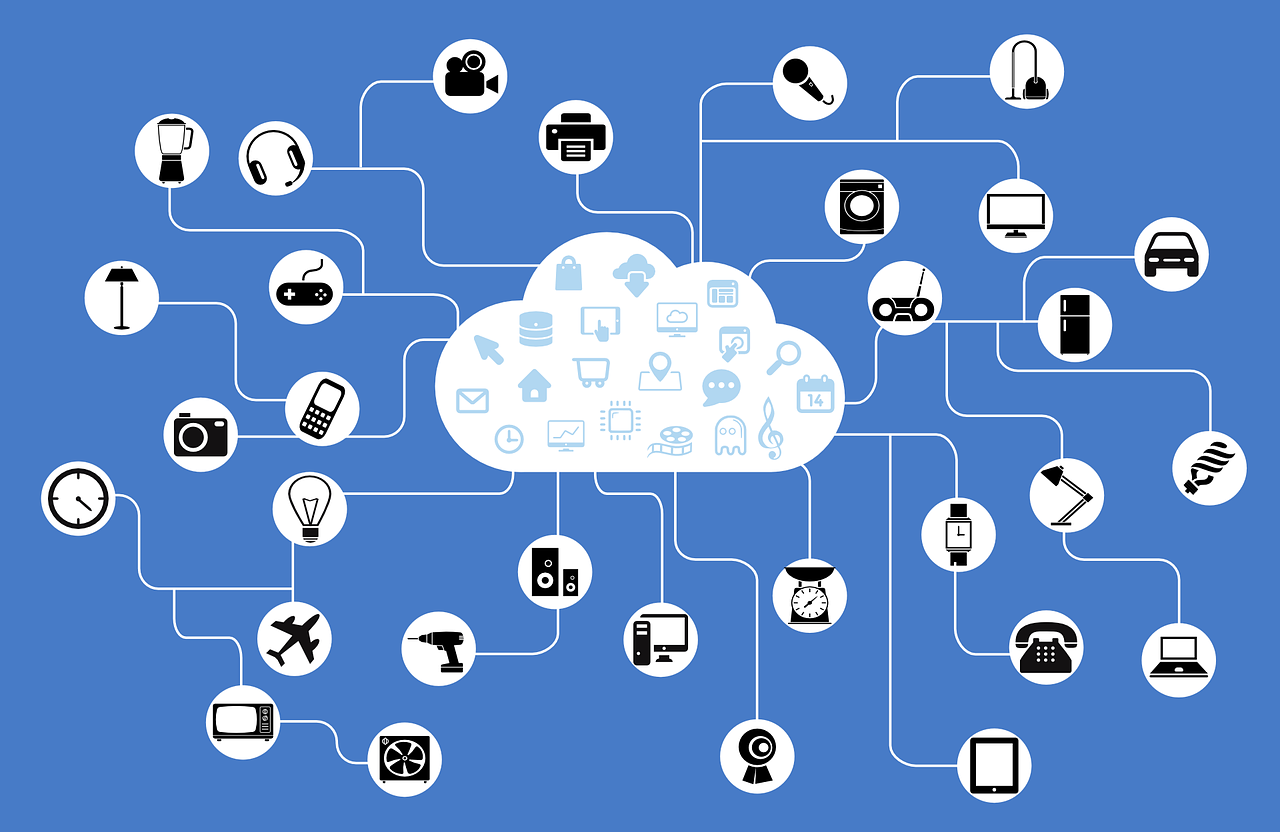
How will IoT help in future healthcare delivery?
Gloria Zaionz, a tech guru at the Innovation Learning Network – a global group comprising of healthcare systems – believes smart technology could supply the data that improves healthcare information systems, lay the groundwork for a connected health environment and enable doctors to remotely monitor patients.
“It has arrived and it’s here to stay, she says during a presentation at the IoT Solutions World Congress in Barcelona. “IoT will be at the foundation of making it happen.
“Changing needs create a different set of demands. With the rise in human longevity, we’re seeing an increased demand for care in an ageing population.
“As we live longer, we’re focused on new and complex diseases so we will need a new type of care.
“We understand the importance of wellbeing and prevention more than ever. It’s about making sure we live healthily.
“Today, our system is focused on a reactive sick care approach, but in the future we will be focused on the person and creating a proactive, preventative and predictive care plan.
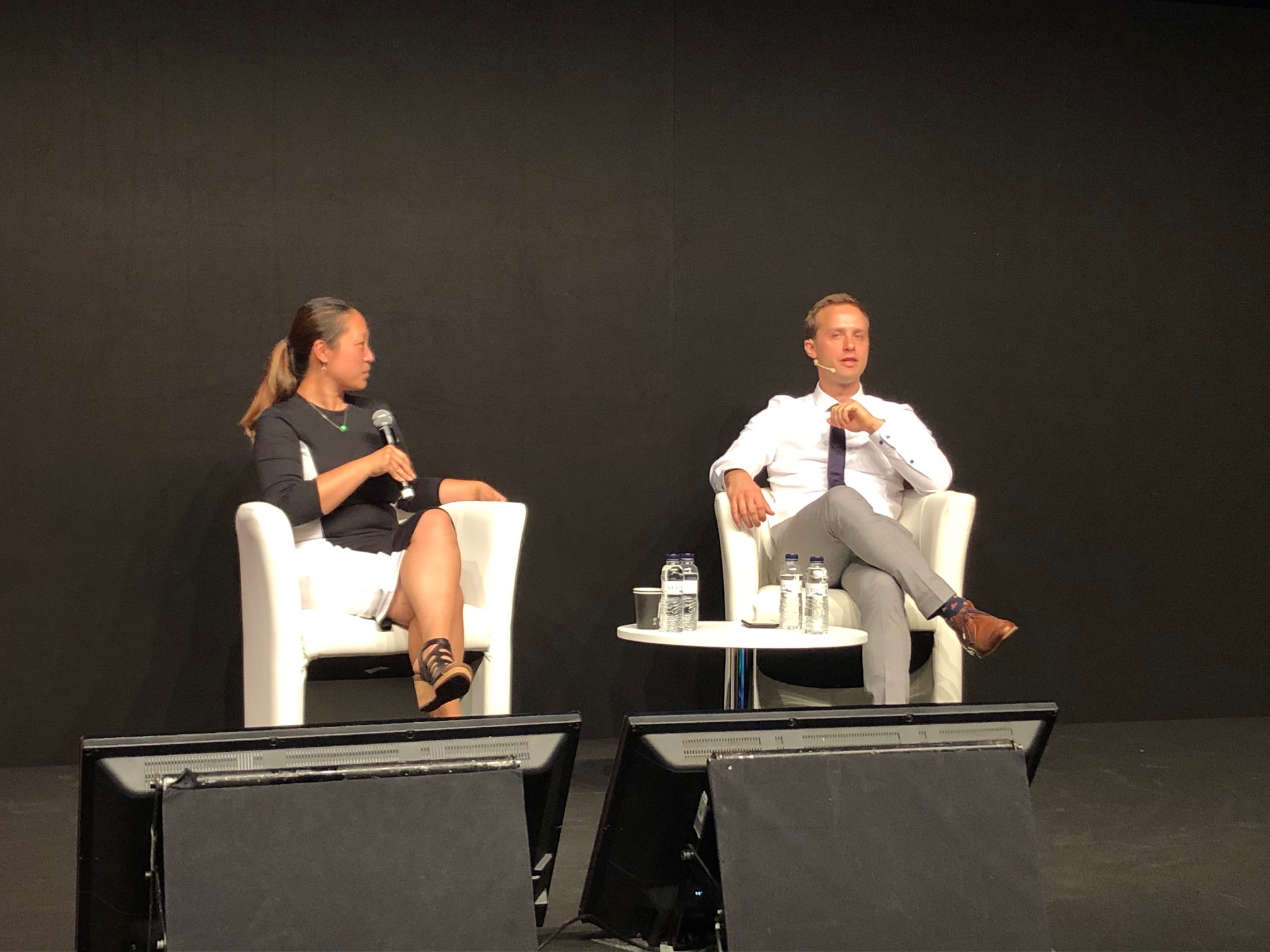
“There will be a decentralised and dephysicalised approach to healthcare – rather than one-size-fits-all, it will be personalised and, rather than provider-focused, it will be people-powered.”
When it comes to shaping the future of healthcare, technologies like artificial intelligence and augmented or virtual reality hog many of the headlines – but Zaionz points out how most of these are built on IoT platforms and capabilities.
She adds: “When you look at the exponential growth of these technologies and add IoT, you end up with a next-generation health frontier.
“IoT has the unique ability to deliver real-time insights, which is critical in the health space because at the moment it’s done on an incremental, set timescale.
“Imagine what your ability is when you can look at proactively outreaching to individuals before they even realise something is happening.”
Examples of technology built on IoT in healthcare applications
Babylon Health
Digital healthcare company Babylon Health has created an app for subscribing patients to conduct remote consultations with doctors and healthcare professionals via text and video messaging.
It also features an AI-powered chatbot symptom checker, which is “designed around a doctor’s brain” and understands the different ways humans express their symptoms to help decide on treatment plans.
Founded in the UK in 2013, Babylon has a partnership with the NHS and operations in Rwanda, with plans to launch in China, the US and Middle East.
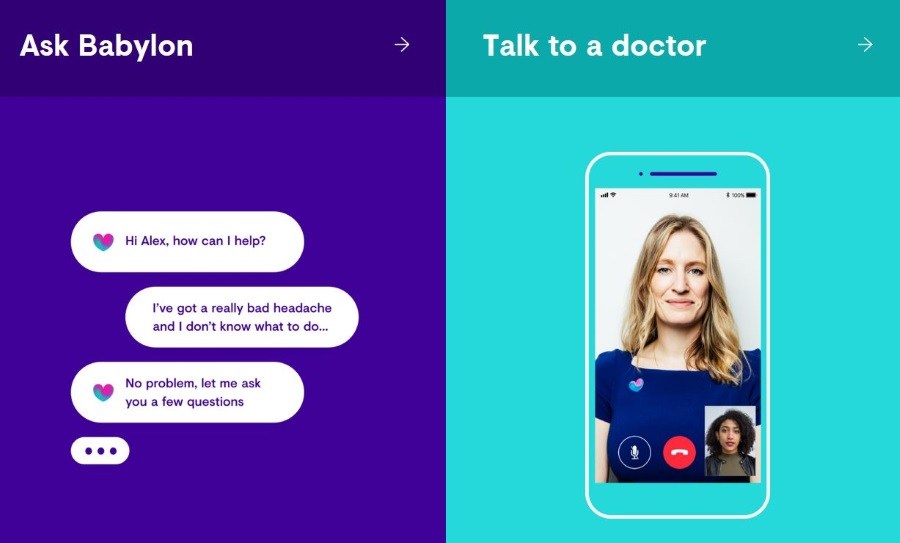
Jules Lancee, a biomedical engineer at Radboud University Medical Center’s (Radboudumc) Reshape Center for Innovation in the Dutch city Nijemegen, says the algorithms used by its chatbot are almost as accurate in giving assessments as human carers.
But this is something that has been disputed by critics who raised concerns over the quality of their advice.
Lancee believes the 24/7 availability of virtual assistants and Babylon’s partnership with Samsung Health to integrate the technology with the South Korean electronics giant’s smartphones signals massive potential.
He adds: “It’s a new way of accessing care and this isn’t minor – it’s huge.”
Tess and Wysa
Mental health chatbot Tess works as a psychological coach, in which patients can speak via text message or an instant messaging app, such as Facebook Messenger, about symptoms and receive advice.
The AI technology has been built by clinical psychologists at Silicon Valley start-up X2 AI to coach people through tough times and build their resilience.
The aim is that they can have conversations with the bot similarly to how they might text friends or a professional coach.
X2 AI claims to have 13 million paying subscribers.
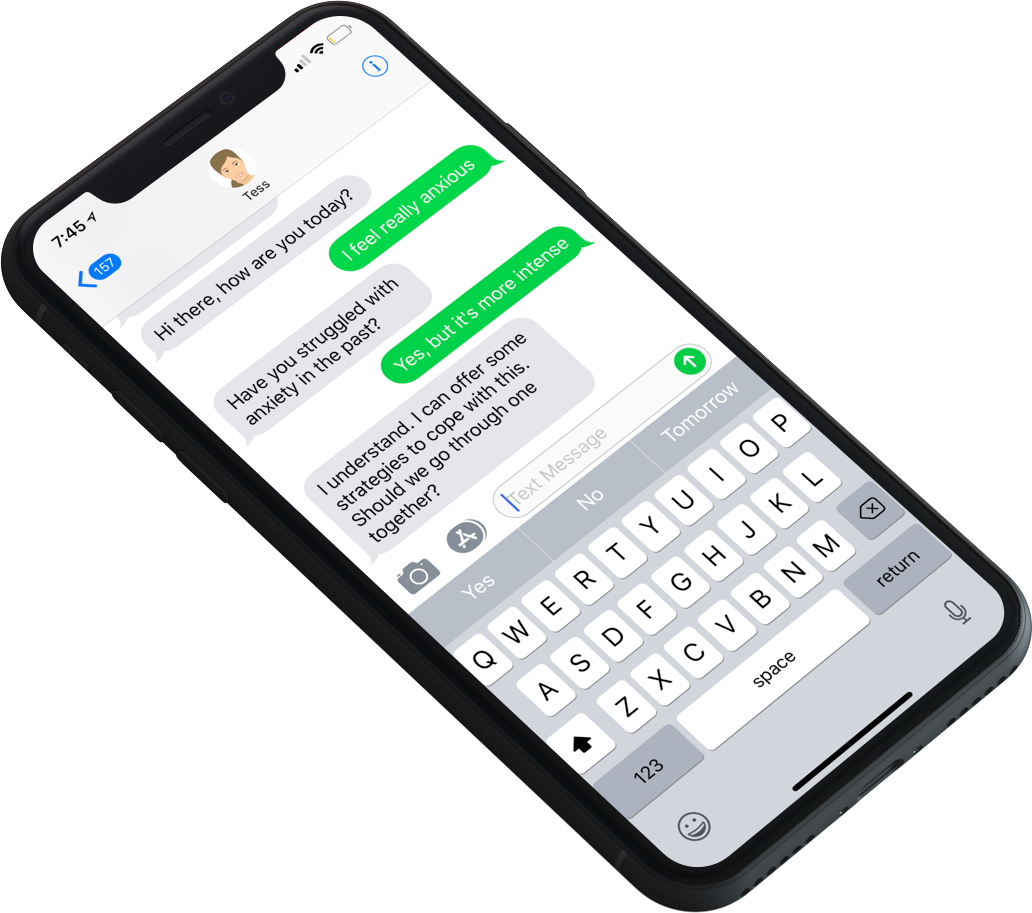
Lancee says: “It uses traditional cognitive methods to treat you. We tested it in our hospital and it’s getting so real that we started to talk about Tess as a ‘she’ – as an actual person.”
Another AI life coach example is Wysa, billed as “your 4am friend for when you have no one to talk to”.
It uses a digital impression of a human for users to communicate with, and can detect facial gestures and moods during the conversation to adapt its responses.
“It’s connected to your medical devices and the internet so it knows about your medical history,” says Lancee.
“We will see this technology coming up more – maybe hospitals will use it to create a virtual entrance to the building.”
Robots
Motor group Ford is testing a robot used in delivering packages to people’s doors, and Lancee believes a similar concept could have use cases in healthcare.
“In hospitals, they could bring a patient to a doctor or perform simple care,” he says. “Or maybe they just help us on a more social level by being our friends.”
He also expects to see robots in the home at some point, adding: “It could be a pill dispenser in which you’re interfaced with a pharmacist or something that reminds you when to take your pills – and even orders some more when they’re running out.”
AR, VR and MR
At Radboudumc, clinicians are testing out use cases for the Microsoft HoloLens mixed reality smart glasses, which imposes digital content over a real-world environment.
Surgeons can wear the device to get access to information they need while carrying out complex procedures without having to move away from the operating theatre to consult notes, while it’s also a useful tool for training people entering this field of work.
One project being trialled at the hospital involves providing a guide for doctors to follow correct protocols when checking an unborn baby’s vital signs.
Elsewhere, VR headsets have been issued to elderly people in care homes who suffer from loneliness.
Lancee explains: “If you can bring the joy of travel they used to do or rediscover old memories, it might combat the physical or mental aspects that come with ageing.”
VR display developer Sensics has even adapted headsets to provide an enhanced sensory experience in which users can detect sounds, smells and temperatures inside a specially-equipped cabin.
Doctors can then take their vital signs to analyse how the environmental changes affect stress levels when treating conditions such as trauma.
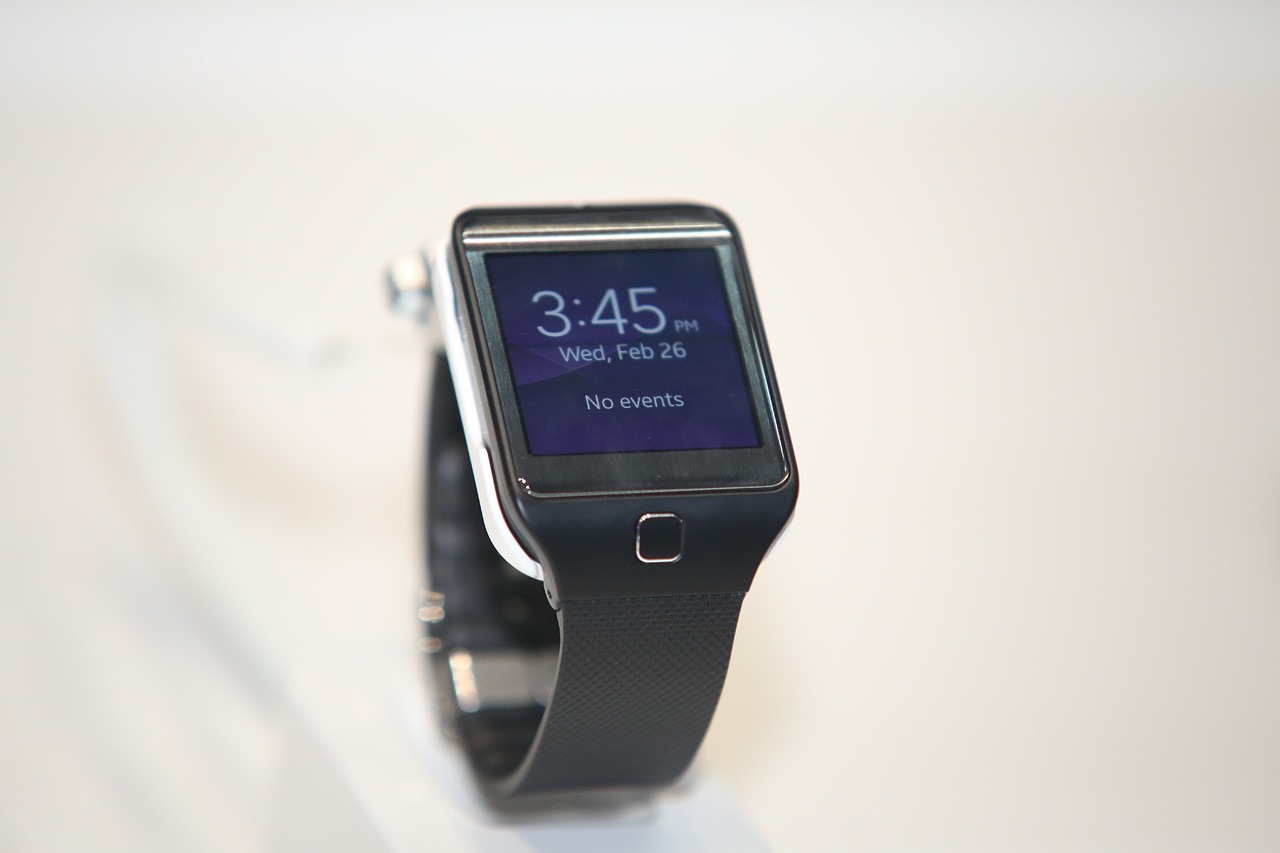
Lancee says wearables like the Apple Watch can also measure how bodies react to different environments.
“We’re starting to generate data through IoT devices and transfer it into something that’s tracking important information,” he adds.
“It will play a role in how we deliver healthcare or stay healthy in our lives.”
Monitoring asthma
Asthma is one of the most common and expensive medical problems in the world, affecting 300 million people and contributing $82bn in estimated direct and indirect costs in the US alone in 2013.
Chronic conditions in general, which also include high blood pressure and diabetes, are a huge drain on healthcare systems, which could save $290bn per year if they found a way to prevent repeatable and avoidable hospital admissions.
That’s according to Dr Michelle Hernandez, an associate professor specialising in allergies and immunology at the University of North Carolina’s School of Medicine.
She has worked with software developer SAS to develop personalised technology that can help predict when a patient could experience an asthma attack.
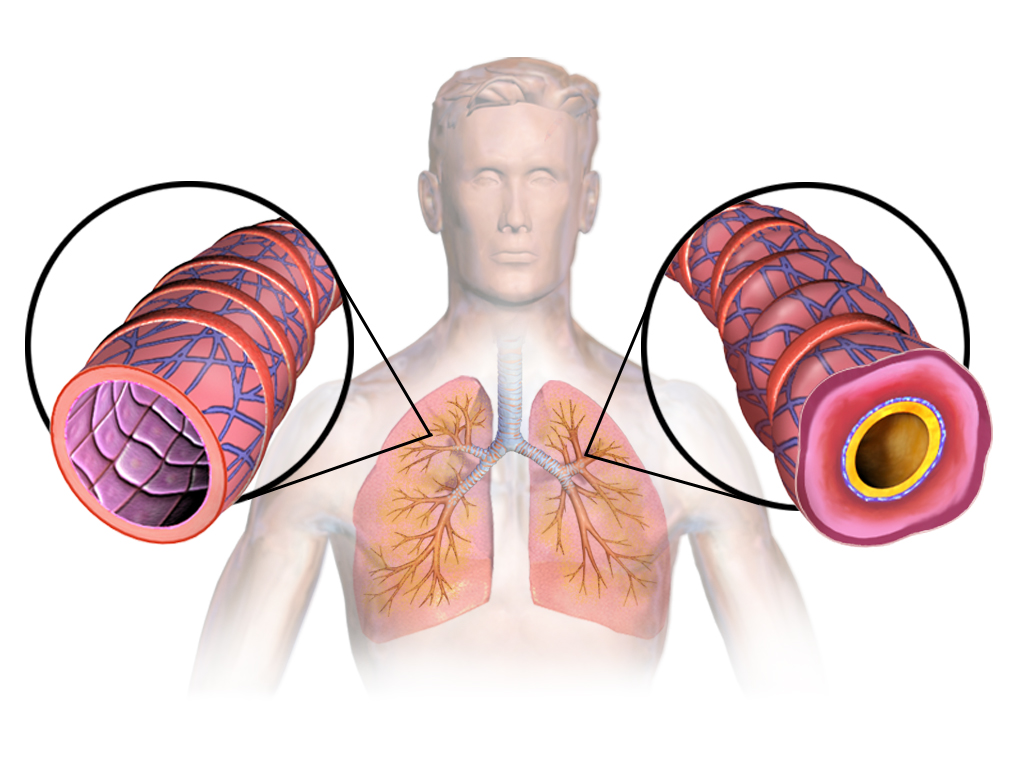
Asthma is a condition in which a person’s airways narrow and swell, producing extra mucus that can make breathing difficult and trigger coughing, wheezing and shortness of breath.
Treatment usually involves daily medication that reduces inflammation, as well as “rescue medicine” in the form of an inhaler or injections that, in the case of a more serious episode, relax the muscles and open them up.
“But at the end of the day, medication can only do so much and if there’s an exposure that causes asthma, then we tell people to reduce that exposure,” says Dr Hernandez.
The problem, though, is that pollen and air pollution – two of the biggest causes of asthma attacks – can be difficult to avoid.
Dr Hernandez and SAS’ research project involves supplying patients with devices that are designed to be worn all the time and are equipped with physiological, biochemical and environmental sensors.
During her team’s investigation, they found that personalised monitoring of the pollutant gas ozone could help prevent asthma attacks.
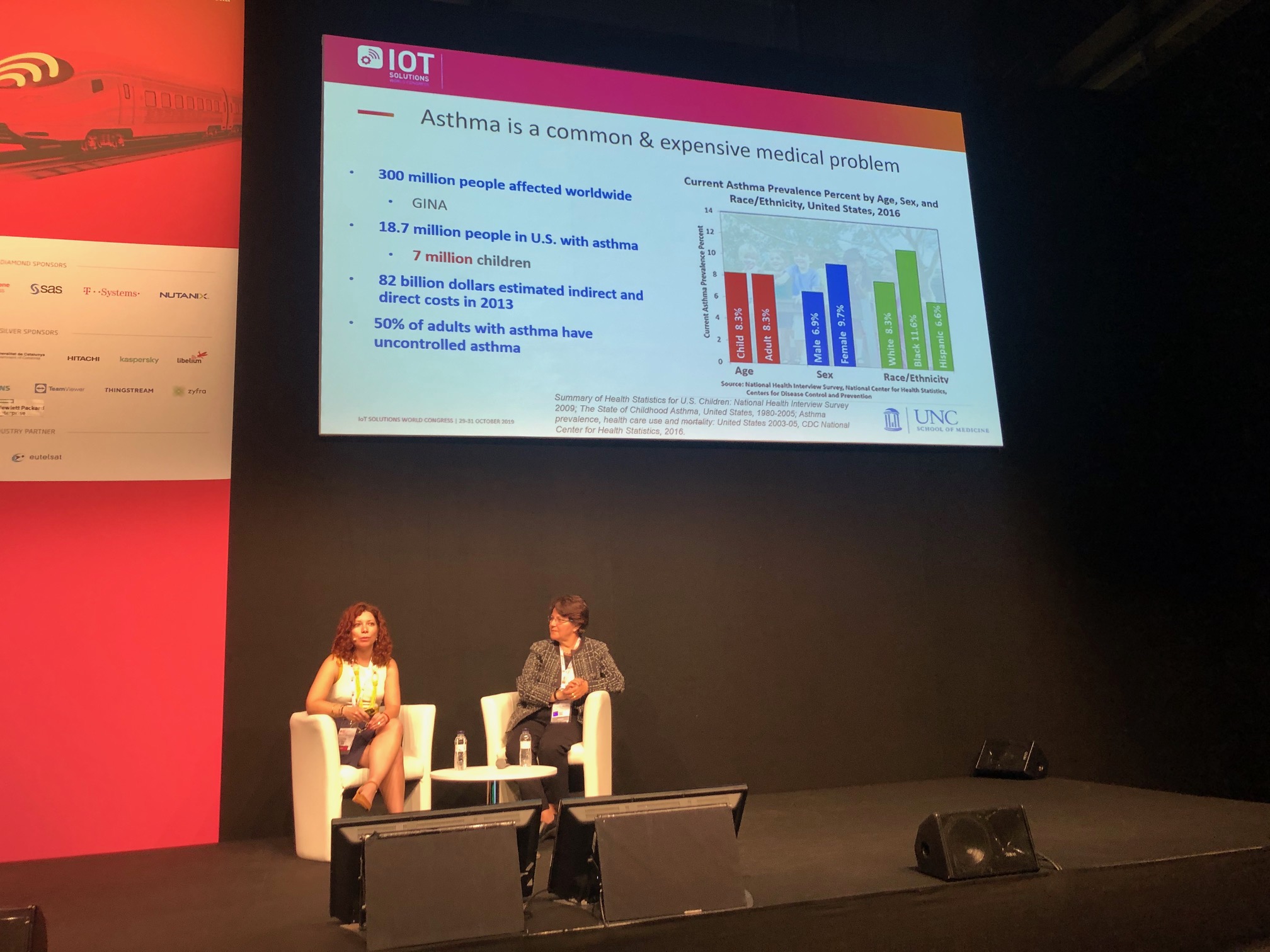
“What we found over time is that with higher levels of ozone, they had significant drops in lung function,” says Dr Hernandez.
“It emphasised that medication isn’t enough – we need to try to reduce the exposure, which is where mobile technology can help.
“The ultimate goal for me is if we can tell if a person is going to be sick and needs help, then we can try to prevent those emergency care visits and have the best life possible.”
As well as asthma, the technology can be applied for atrial fibrillation, diet management, wound healing and detecting whether patients are taking medication.
